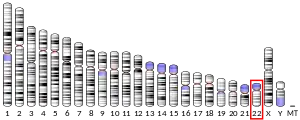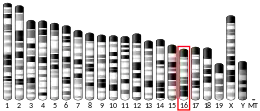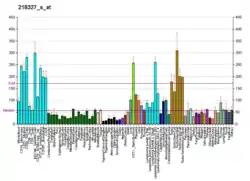| SNAP29 | |||||||||||||||||||||||||||||||||||||||||||||||||||
|---|---|---|---|---|---|---|---|---|---|---|---|---|---|---|---|---|---|---|---|---|---|---|---|---|---|---|---|---|---|---|---|---|---|---|---|---|---|---|---|---|---|---|---|---|---|---|---|---|---|---|---|
| |||||||||||||||||||||||||||||||||||||||||||||||||||
| Identifiers | |||||||||||||||||||||||||||||||||||||||||||||||||||
| Aliases | SNAP29, CEDNIK, SNAP-29, synaptosome associated protein 29kDa, synaptosome associated protein 29 | ||||||||||||||||||||||||||||||||||||||||||||||||||
| External IDs | OMIM: 604202 MGI: 1914724 HomoloGene: 3512 GeneCards: SNAP29 | ||||||||||||||||||||||||||||||||||||||||||||||||||
| |||||||||||||||||||||||||||||||||||||||||||||||||||
| |||||||||||||||||||||||||||||||||||||||||||||||||||
| |||||||||||||||||||||||||||||||||||||||||||||||||||
| |||||||||||||||||||||||||||||||||||||||||||||||||||
| |||||||||||||||||||||||||||||||||||||||||||||||||||
| Wikidata | |||||||||||||||||||||||||||||||||||||||||||||||||||
| |||||||||||||||||||||||||||||||||||||||||||||||||||
Synaptosomal-associated protein 29 is a protein that in humans is encoded by the SNAP29 gene.[5][6][7]
Function
This gene, a member of the SNAP25 gene family, encodes a protein involved in multiple membrane trafficking steps. Two other members of this gene family, SNAP23 and SNAP25, encode proteins that bind a syntaxin protein and mediate synaptic vesicle membrane docking and fusion to the plasma membrane. The protein encoded by this gene binds tightly to multiple syntaxins and is localized to intracellular membrane structures rather than to the plasma membrane. While the protein is mostly membrane-bound, a significant fraction of it is found free in the cytoplasm. Use of multiple polyadenylation sites has been noted for this gene.[7]
Interactions
SNAP29 has been shown to interact with Syntaxin 3[5] and EHD1.[8]
SNAP29 was shown to interact with CVB3 and EV-D68 viral protease 3C.[9][10]
See also
References
- 1 2 3 GRCh38: Ensembl release 89: ENSG00000099940 - Ensembl, May 2017
- 1 2 3 GRCm38: Ensembl release 89: ENSMUSG00000022765 - Ensembl, May 2017
- ↑ "Human PubMed Reference:". National Center for Biotechnology Information, U.S. National Library of Medicine.
- ↑ "Mouse PubMed Reference:". National Center for Biotechnology Information, U.S. National Library of Medicine.
- 1 2 Steegmaier M, Yang B, Yoo JS, Huang B, Shen M, Yu S, Luo Y, Scheller RH (January 1999). "Three novel proteins of the syntaxin/SNAP-25 family". J Biol Chem. 273 (51): 34171–9. doi:10.1074/jbc.273.51.34171. PMID 9852078.
- ↑ Dunham I, Shimizu N, Roe BA, Chissoe S, Hunt AR, Collins JE, Bruskiewich R, Beare DM, Clamp M, Smink LJ, Ainscough R, Almeida JP, Babbage A, Bagguley C, Bailey J, Barlow K, Bates KN, Beasley O, Bird CP, Blakey S, Bridgeman AM, Buck D, Burgess J, Burrill WD, O'Brien KP (Dec 1999). "The DNA sequence of human chromosome 22". Nature. 402 (6761): 489–95. Bibcode:1999Natur.402..489D. doi:10.1038/990031. PMID 10591208.
- 1 2 "Entrez Gene: SNAP29 synaptosomal-associated protein, 29kDa".
- ↑ Rotem-Yehudar R, Galperin E, Horowitz M (August 2001). "Association of insulin-like growth factor 1 receptor with EHD1 and SNAP29". J. Biol. Chem. 276 (35): 33054–60. doi:10.1074/jbc.M009913200. PMID 11423532.
- ↑ Mohamud, Yasir; Shi, Junyan; Qu, Junyan; Poon, Tak; Xue, Yuan Chao; Deng, Haoyu; Zhang, Jingchun; Luo, Honglin (2018-03-20). "Enteroviral Infection Inhibits Autophagic Flux via Disruption of the SNARE Complex to Enhance Viral Replication". Cell Reports. 22 (12): 3292–3303. doi:10.1016/j.celrep.2018.02.090. ISSN 2211-1247. PMID 29562184.
- ↑ Corona, Abigail K.; Saulsbery, Holly M.; Corona Velazquez, Angel F.; Jackson, William T. (2018-03-20). "Enteroviruses Remodel Autophagic Trafficking through Regulation of Host SNARE Proteins to Promote Virus Replication and Cell Exit". Cell Reports. 22 (12): 3304–3314. doi:10.1016/j.celrep.2018.03.003. ISSN 2211-1247. PMC 5894509. PMID 29562185.
Further reading
- Wong SH, Xu Y, Zhang T, Griffiths G, Lowe SL, Subramaniam VN, Seow KT, Hong W (1999). "GS32, a novel Golgi SNARE of 32 kDa, interacts preferentially with syntaxin 6". Mol. Biol. Cell. 10 (1): 119–34. doi:10.1091/mbc.10.1.119. PMC 25158. PMID 9880331.
- Scales SJ, Chen YA, Yoo BY, Patel SM, Doung YC, Scheller RH (2000). "SNAREs contribute to the specificity of membrane fusion". Neuron. 26 (2): 457–64. doi:10.1016/S0896-6273(00)81177-0. PMID 10839363.
- Rotem-Yehudar R, Galperin E, Horowitz M (2001). "Association of insulin-like growth factor 1 receptor with EHD1 and SNAP29". J. Biol. Chem. 276 (35): 33054–60. doi:10.1074/jbc.M009913200. PMID 11423532.
- Hohenstein AC, Roche PA (2001). "SNAP-29 is a promiscuous syntaxin-binding SNARE". Biochem. Biophys. Res. Commun. 285 (2): 167–71. doi:10.1006/bbrc.2001.5141. PMID 11444821.
- Su Q, Mochida S, Tian JH, Mehta R, Sheng ZH (2002). "SNAP-29: a general SNARE protein that inhibits SNARE disassembly and is implicated in synaptic transmission". Proc. Natl. Acad. Sci. U.S.A. 98 (24): 14038–43. doi:10.1073/pnas.251532398. PMC 61163. PMID 11707603.
- Martinez-Arca S, Rudge R, Vacca M, Raposo G, Camonis J, Proux-Gillardeaux V, Daviet L, Formstecher E, Hamburger A, Filippini F, D'Esposito M, Galli T (2003). "A dual mechanism controlling the localization and function of exocytic v-SNAREs". Proc. Natl. Acad. Sci. U.S.A. 100 (15): 9011–6. Bibcode:2003PNAS..100.9011M. doi:10.1073/pnas.1431910100. PMC 166429. PMID 12853575.
- Xu Y, Shi H, Wei S, Wong SH, Hong W (2005). "Mutually exclusive interactions of EHD1 with GS32 and syndapin II". Mol. Membr. Biol. 21 (4): 269–77. doi:10.1080/09687680410001716871. PMID 15371016. S2CID 22820496.
- Collins JE, Wright CL, Edwards CA, Davis MP, Grinham JA, Cole CG, Goward ME, Aguado B, Mallya M, Mokrab Y, Huckle EJ, Beare DM, Dunham I (2005). "A genome annotation-driven approach to cloning the human ORFeome". Genome Biol. 5 (10): R84. doi:10.1186/gb-2004-5-10-r84. PMC 545604. PMID 15461802.
- Pan PY, Cai Q, Lin L, Lu PH, Duan S, Sheng ZH (2005). "SNAP-29-mediated modulation of synaptic transmission in cultured hippocampal neurons". J. Biol. Chem. 280 (27): 25769–79. doi:10.1074/jbc.M502356200. PMC 1864940. PMID 15890653.
- Sprecher E, Ishida-Yamamoto A, Mizrahi-Koren M, Rapaport D, Goldsher D, Indelman M, Topaz O, Chefetz I, Keren H, O'brien TJ, Bercovich D, Shalev S, Geiger D, Bergman R, Horowitz M, Mandel H (2005). "A mutation in SNAP29, coding for a SNARE protein involved in intracellular trafficking, causes a novel neurocutaneous syndrome characterized by cerebral dysgenesis, neuropathy, ichthyosis, and palmoplantar keratoderma". Am. J. Hum. Genet. 77 (2): 242–51. doi:10.1086/432556. PMC 1224527. PMID 15968592.
- Carroll JS, Liu XS, Brodsky AS, Li W, Meyer CA, Szary AJ, Eeckhoute J, Shao W, Hestermann EV, Geistlinger TR, Fox EA, Silver PA, Brown M (2005). "Chromosome-wide mapping of estrogen receptor binding reveals long-range regulation requiring the forkhead protein FoxA1". Cell. 122 (1): 33–43. doi:10.1016/j.cell.2005.05.008. PMID 16009131. S2CID 16841542.
- Rual JF, Venkatesan K, Hao T, Hirozane-Kishikawa T, Dricot A, Li N, Berriz GF, Gibbons FD, Dreze M, Ayivi-Guedehoussou N, Klitgord N, Simon C, Boxem M, Milstein S, Rosenberg J, Goldberg DS, Zhang LV, Wong SL, Franklin G, Li S, Albala JS, Lim J, Fraughton C, Llamosas E, Cevik S, Bex C, Lamesch P, Sikorski RS, Vandenhaute J, Zoghbi HY, Smolyar A, Bosak S, Sequerra R, Doucette-Stamm L, Cusick ME, Hill DE, Roth FP, Vidal M (2005). "Towards a proteome-scale map of the human protein-protein interaction network". Nature. 437 (7062): 1173–8. Bibcode:2005Natur.437.1173R. doi:10.1038/nature04209. PMID 16189514. S2CID 4427026.




